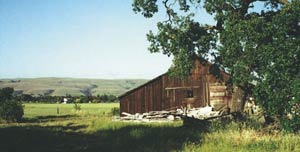But implementation of jobs and homes is still unclear
Morgan Hill – Plans to develop Coyote Valley could be finished this year but how and when those will be implemented is still up in the air.
A state-mandated environmental review comes out in March and is expected to be followed closely by a discussion of housing triggers for the valley.
The results of those efforts could determine the pace of construction for 25,000 homes and 50,000 industry-leading jobs south of San Jose and west of U.S. 101.
“It is very unclear how the implementation would be done at this point … there are several ideas out there,” said Kerry Williams, president of the Coyote Housing Group, a consortium of half a dozen property owners and developers who have paid more than $16 million for the four-year-old planning process.
Other hurdles – once a plan is finished – include getting state and federal permits to realign creeks and annex land. The U.S. Army Corps of Engineers will do its own environmental review, a process that will initiate in a few months and could take a year and a half to complete.
New San Jose Mayor Chuck Reed has said he’s in no hurry to finish Coyote Valley plans.
Reed supports the triggers that are in place now, calling for 5,000 jobs before housing construction begins.
If the job-requirement trigger is to be changed, Reed has said, it should be through a review of San Jose’s general plan expected to start this summer.
While some observers have sensed a loss of momentum with Reed’s election in November, Williams said that’s not the case.
“We feel we haven’t lost momentum and we’ve just reached a major milestone with the release of the draft specific plan,” she said. “There is quite a bit of process to go through, but we have reason to believe the task force will complete its wok by the end of the year and make a recommendation to the council.”
Williams, a task force member, said the triggers should be modified to allow quicker implementation of a high-density, amenities-rich atmosphere.
Coyote Valley requires $1.5 billion of infrastructure, like water pipes and roads, and $500 million would come in the first phase of development. More construction at once would mean more people paying down those costs.
“With this plan, because of its size and nature, the 5,000-jobs trigger simply doesn’t work,” she said. “You want to start this plan big. You’re asking people to live and work at higher densities … you’re creating an amenities-rich environment … you need to establish them from the beginning to give this plan the best chance for success.”
Morgan Hill Mayor Steve Tate said he doesn’t expect a vast implementation of Coyote Valley development.
“I think the specific plan will be put on a shelf for two or three years, and then we’ll see a very slow process,” Tate said.
Ken Saso, also a task force member, owns three parcels totaling 37 acres in Coyote Valley. He said San Jose promised land owners services and utilities needed for development 40 years ago and hopes plans don’t stall.
“This has been an ongoing process for people who own land along Monterey Highway,” Saso said.
The sheer size of Coyote Valley’s proposed population – 75,000 people – means the plans could take a while to complete, Saso said.
“You can load the mule down so much you can’t make it move,” he said. “Then what have you done? You’ve created a monster.”
Tony Burchyns covers Morgan Hill for The Times. Reach him at (408) 779-4106 ext. 201 or tb*******@*************es.com.








